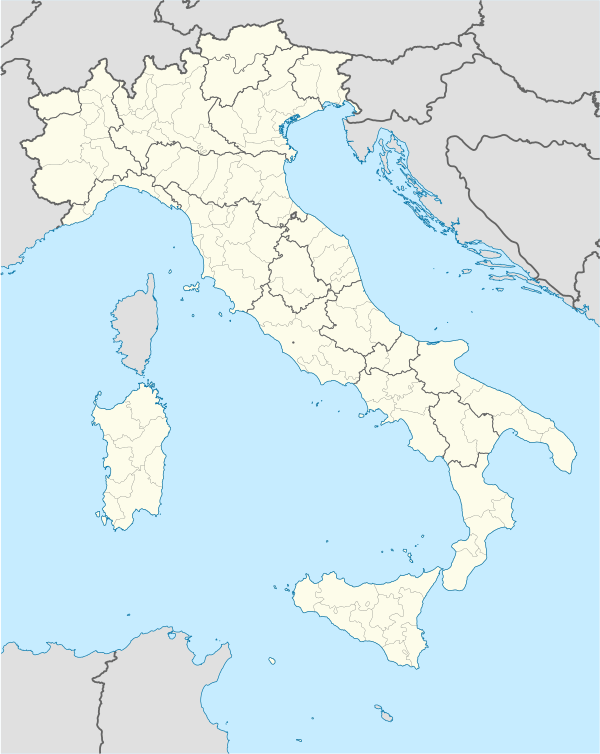Campo Ligure
| Campo Ligure | ||
|---|---|---|
| Comune | ||
| Comune di Campo Ligure | ||
|
| ||
| ||
 Campo Ligure Location of Campo Ligure in Italy | ||
| Coordinates: 44°32′N 8°42′E / 44.533°N 8.700°E | ||
| Country | Italy | |
| Region | Liguria | |
| Province | Genoa (GE) | |
| Government | ||
| • Mayor | Andrea Pastorino | |
| Area | ||
| • Total | 23.8 km2 (9.2 sq mi) | |
| Elevation | 342 m (1,122 ft) | |
| Population (31 December 2008[1]) | ||
| • Total | 3,080 | |
| • Density | 130/km2 (340/sq mi) | |
| Demonym | Campesi | |
| Time zone | CET (UTC+1) | |
| • Summer (DST) | CEST (UTC+2) | |
| Postal code | 16013 | |
| Dialing code | 010 | |
| Patron saint | St. Mary Magdalene | |
| Saint day | July 22 | |
| Website | Official website | |
Campo Ligure is a comune (municipality) in the Province of Genoa in the Italian region Liguria, located about 37 kilometres (23 mi) northwest of Genoa.
Campo Ligure borders the following municipalities: Bosio, Masone, Rossiglione, Tiglieto.
Geography
It is located in the center of the intersection of the rivers Stura, Angassino and Ponzema, 25 kilometres (16 mi) from Genoa, and part of its territory to the west is within the boundaries of the Parco naturale regionale del Beigua, while in the east borders the Parco delle Capanne di Marcarolo.
History
The first sources related to human settlements in this area date from the third century AD. Roman legions built a camp here, under the leadership of Emperor Aurelian.
Economy
The country's economic activity is mainly connected to the processing of filigrana and crafts and the textile industry and mechanical engineering.
Twin towns — Sister cities
Campo Ligure is twinned with:
-
 Corbelin, France (2010)
Corbelin, France (2010)
Events
- "Festa patronale di santa Maria Maddalena" on the Sunday following July 22
- "Mostra della filigrana", in months August e September
Main sights
- Castle, built by the Spinola family of Genoa since 1309
- Palazzo Spinola. Built in the 14th century, it was enlarged in 1693
- Medieval bridge on the Stura river. The original structure dated to the 9th century, but it was rebuilt several times starting from the 18th century.
- Oratory of Nostra Signora Assunta, in Baroque style
- Parish church (18th century), in Baroque style
- Giardino Botanico Montano di Pratorondanino
- Monte Pracaban
